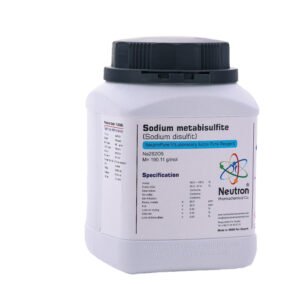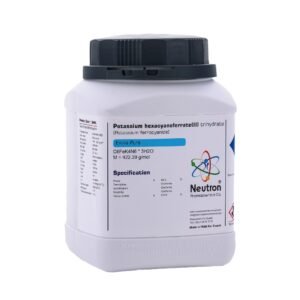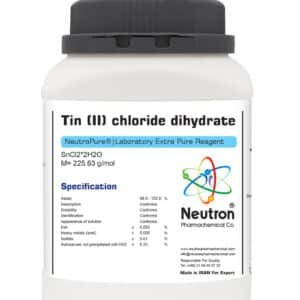تیواوره
| Formula | CH4N2S |
| Chemical formula | H2NCSNH2 |
| Molar mass | 76.12 g/mol |
| HS code | 29309070 |
| EC number | 200-543-5 |
| CAS number | 71-41-0 |
| Storage | Store at 15 to 25°c |
| SDS | available |
| R phrase | R 22-40-51/53-63 |
| S phrase | S 36/37-61 |
| Odour | odurless |
| Form | solid |
| Color | Colorless |
| Ignition temperature | 440 ◦C |
| pHvalue | 6 -8( 50 g/l 20 ◦C) |
| Solubility in water | 137 g/l (20 ◦C) |
| Solubility in ethanol | 37 g/l (20 ◦C) |
| Melting point | 174-179.0◦C |
| Assay | ≥ | 98.0 | % |
| Description | Conforms | ||
| Identification | Conforms | ||
| Solubility | Conforms | ||
| Melting range | 172.0 to 175.0 | °c | |
| Iron | ≤ | 0.001 | % |
Thiourea is a white crystalline organic compound widely used in pharmaceutical and chemical laboratories, particularly known for its role as a reagent in organic synthesis and analytical chemistry.
🏭⚗️ Production
Thiourea is typically produced industrially by reacting ammonia with carbon disulfide in an aqueous medium, where an intermediate compound forms and rearranges to yield thiourea crystals after crystallization.
🔬 Properties
Thiourea appears as a white to off-white crystalline solid that is soluble in water and alcohol, with a melting point around one hundred seventy-six to one hundred seventy-eight degrees Celsius. It has unique chemical reactivity due to the presence of sulfur and nitrogen atoms, which allow it to act as a nucleophile and reducing agent. Its molar mass is approximately seventy-six grams per mole.
🧪 Applications
Thiourea is widely used in pharmaceutical laboratories as a reagent in organic synthesis, including the preparation of heterocyclic compounds and pharmaceuticals. It is also employed in analytical chemistry for the detection of metals, especially in qualitative analysis as a complexing agent. Additionally, thiourea finds applications in the photographic industry as a stabilizer and in textile processing as a dyeing assistant.
⚠️ Safety
Thiourea is moderately toxic and can cause skin and respiratory irritation. Prolonged exposure or ingestion may affect the thyroid gland and liver. It should be handled with gloves and eye protection in a well-ventilated laboratory environment. Thiourea must be stored in a cool, dry place away from strong oxidizers and acids to prevent hazardous reactions.





